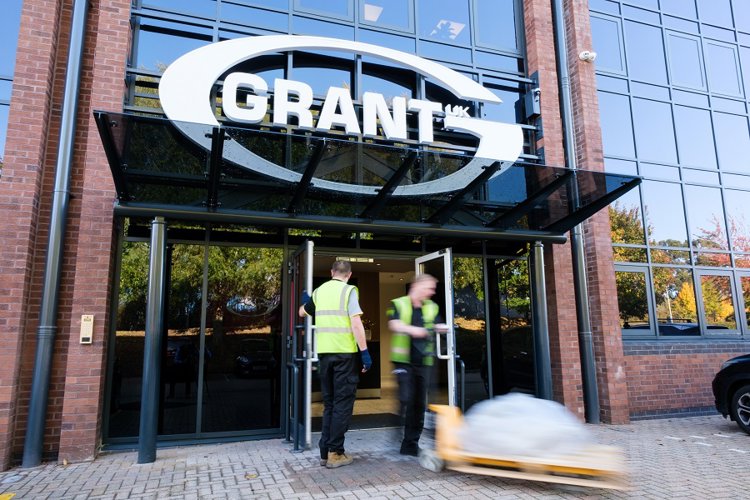The term ‘net zero carbon’ is becoming increasingly used throughout society by Government, in the media, by major corporations and beyond. What does ‘net zero carbon’ mean and why should homeowners understand its meaning in the context of their day to day living? In this article, we explore what net zero carbon looks like and how sustainable heating solutions can help us achieve these targets.
[Content updated 17th July 2024]
Climate change and the impact that human activities are having on the planet and the environment are at the forefront of people’s minds. Whether it is smaller measures, such as recycling or sourcing local produce, or larger scale activities, such as electric cars or renewable energy, more and more of us are taking steps to reduce our carbon footprints. Businesses are similarly placing a heavy emphasis on lowering the carbon emissions of their activities, whether that is through their operations or by manufacturing sustainable products.
Government legislation
Supporting consumer and commercial demand for sustainable products and more environmentally friendly service offerings is needed in order to achieve net zero greenhouse gas emissions by 2050. With carbon dioxide being one of the most prevalent greenhouse gases, it is often the one that you will hear about the most, hence the phrase ‘net zero carbon’. What this means is that any emissions produced need to be balanced by solutions elsewhere which offset the equivalent amount of greenhouse gases in the atmosphere, for example by planting trees. The levels at which emissions are produced today could not be sufficiently counteracted therefore the goal of net zero emissions will be only be achieved if multiple tactics are deployed.
Eliminating heavy polluters
It is unsurprising that one key element of the net zero emissions strategy is to remove heavy polluters. Two examples of this include the proposed ban on the sale of new diesel and petrol cars from 2035 and the ban on natural gas in new build domestic homes from 2025. Eliminating products which are deemed to be high pollutants (such a fossil fuels) will help significantly lower the levels of carbon and other greenhouse gases which are produced and released into the atmosphere. It is important to note that formal legislation set by Government is subject to change when changes in Government take place and the Labour Government appointed in July 2024 may introduce different proposals.
Utilising greener thinking
If certain technologies or products are no longer available, alternative sustainable solutions need to be sourced which can fulfil demand effectively while still being more environmentally friendly. We are already seeing this today with some electricity providers no longer reliant on fossil fuels, instead turning to renewable energy to keep the grid going. Meanwhile, other products have been adapted, using both renewables and finite resources as part of their transition to a cleaner operation (as can be seen with hybrid vehicles for example).
The role of home heating

Heating homes is currently a major contributor to the carbon emissions released into the atmosphere so decarbonsing heating systems will play a pivotal part in helping the country to achieve net zero by 2050. The majority of homes, especially in towns and cities, are kept warm by natural gas boilers meanwhile, in more rural communities, properties tend to be off the gas grid so will be fuelled by oil or LPG. Transforming the heating of these existing homes will be a gradual process because you simply cannot transform a system from one type to another overnight.
There are many ways in which homeowners can start their own journeys to reducing the carbon footprints of their heating systems. The first step is looking at ways in which your home can be made more energy efficient – this can be achieved by getting your roof and walls insulated or by replacing your windows with double or triple glazing. The next step is to look at your heat source itself – older boilers, for example, tend to be less efficient so, if you do not want to completely change how your heating is fuelled, maybe research new models of your existing boiler as they will often have much high efficiencies which in turn will lower your fuel usage which helps the environment and your wallet.
The ultimate step is upgrading your heating system to incorporate renewable technologies. Depending on the requirements of your property, its build and characteristics, you may opt for a hybrid heating system as these are a great low carbon heating solution when it is not feasible to go completely green. Alternatively, you may decide that you want your heating system to be 100% renewable and opt for an air source heat pump. A lot of research and development has gone into the technology and design of air source heat pumps and today, they combine excellent performances with the green credentials vital for the future. For new builds in particular and for existing homes looking to upgrade their heating systems, air source heat pumps can be the right answer and this is just one of the reasons why they will be a central component to help households decarbonise and achieve our collective net zero carbon targets.
Grant UK has made it its mission to help customers on their journey to net zero carbon. Please click here to read our Company Manifesto, published in 2020, which delves into deeper detail about our vision to achieve sustainable home heating in line with the net zero carbon targets.

